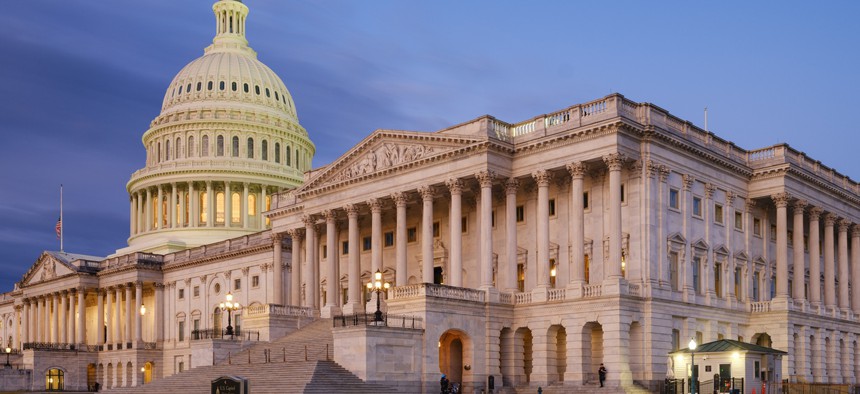House lawmakers diverge on DOGE but point to bipartisanship on federal tech

J. David Ake/Getty Images
Many of the witnesses opted not to discuss DOGE’s high-profile, controversial work on government tech and data during a Tuesday hearing.
Lawmakers and experts on both sides of the aisle at a Tuesday House Oversight hearing emphasized the importance of modernizing the government’s technology but quietly disagreed on whether billionaire Elon Musk’s Department of Government Efficiency is helping or hurting the cause.
Updating the antiquated technology the federal government runs on has long been a bipartisan goal that, until recently, didn’t get much nationwide attention, although DOGE’s recent handling of government tech and data has been controversial and the subject of several lawsuits.
DOGE’s efforts to consolidate Americans’ data may run afoul of privacy laws, which are also at the center of upwards of ten lawsuits concerning the handling of government data.
The administration has also laid off many technology-focused federal employees, endangering ongoing modernization work in the process. Top leadership in many agencies’ tech shops have been wiped out as chief information officers are replaced, resign or are fired, some when they objected to giving DOGE administrative access to a key system.
“Recent reports have raised concerns about [DOGE’s efforts] that may undermine the integrity of federal IT modernization, particularly regarding the protection of sensitive data and the layoffs of critical IT and cyber security experts,” said Rep. Shontel Brown, D-Ohio, the top Democrat on the subcommittee for cyber, IT and government innovation.
“IT modernization is a bipartisan issue,” she later noted. “I look forward to continuing our work together on this committee, cutting through the noise created by the reckless cuts at DOGE.”
Rep. Nancy Mace, R-S.C., the chair of the subcommittee, said that Trump’s reworking of what was previously the U.S. Digital Service into the DOGE “elevates the work USDS has been doing across the three previous administrations under Presidents Obama, Trump and Biden.”
Since Trump took office, many former USDS employees have been fired or quit rather than work for DOGE, which they say is taking actions that go against the stated mission of modernizing the government’s technology.
Many of the witnesses — longtime federal IT executives Margie Graves and Maria Roat, as well as Trump’s federal chief information officer from his first term, Suzette Kent — didn’t go into detail about DOGE’s work during the hearing.
“It is thrilling to think that modernization is finally a top priority,” said Kent, pointing to “executive orders, streamlining of acquisition at [the General Services Administration], proposed policy changes and updated laws.”
The minority witness, Erie Meyer, meanwhile, argued that “what’s happening right now in the DOGE is not modernization.” Until recently, she was the Consumer Financial Protection Bureau’s chief technologist.
“The cheapest, fastest and most effective way to modernize IT in the federal government is to fund programs like the Technology Modernization Fund and to get technical people into government,” she said. “The most expensive, slowest and least effective way is to lose all of your technical talent and sloppily outsource it once you realize what you have done.”
Other witnesses also pointed to the efficacy of the TMF. Mace recently reintroduced a bipartisan reauthorization bill for the revolving fund alongside Rep. Gerry Connolly, D-Va., chair of the House Oversight Committee.
However, that fund’s office — like many other tech teams in government, including the agency teams managing the projects funded by the TMF — has shrunk since Trump took office, two sources familiar confirmed with Nextgov/FCW.
“One of the first things that DOGE did after they arrived at my agency was to fire every single technologist who we brought in,” said Meyer.
“The government will always need technology capability to match the technology that they’re using,” Kent told Nextgov/FCW when asked about the impact of staffing cuts on bipartisan federal IT modernization efforts. “There are great technologists who are still in government…. They are doing great work, and they’re bringing innovation. Those are the things that I see, externally.”
NEXT STORY: GSA unveils new unified procurement strategy


